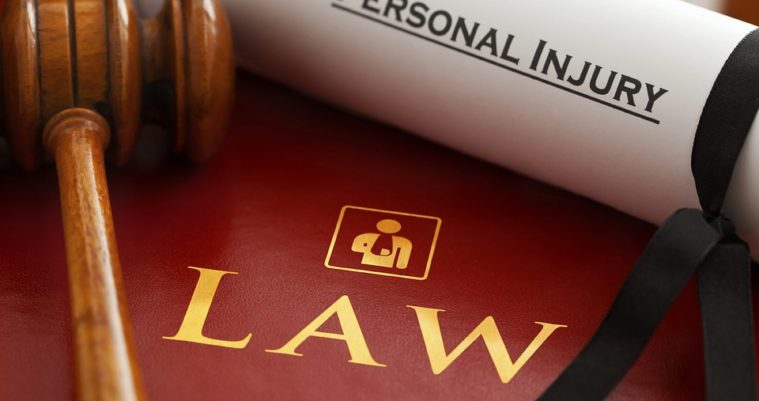All personal injury cases are serious matters and require experienced representation by a seasoned personal injury attorney. What make catastrophic personal injury cases different are the extent of the injuries, the amount of monetary compensation available, and the types of damages that are available to the injured party. This article explores some important distinctions to keep in mind when comparing catastrophic personal injury cases with other types of personal injury cases. Nature and Extent of the Injuries Sustained Catastrophic injuries, quite simply, are those types of personal injuries that have permanent and potentially long-term impacts on the person injured. Common types of catastrophic injuries include concussions, traumatic brain injuries, paralysis, loss of limbs or other body parts, spinal cord injuries, and neurological injuries. Treatment for these types of injuries often involves multiple surgeries, a long and difficult recovery process, and medical treatment that extends well into the foreseeable future. Two key words which characterize catastrophic injury cases – especially when compared with other types of personal injury cases – are “debilitating” and “permanent.” Catastrophic injuries may cause the injured person to have difficulty performing daily living and household activities. In some cases, the injured person is forced to reside in a nursing home or assisted living facility as a result of his or her injuries. These catastrophic personal injuries can also have a significant impact on the injured person’s family and loved ones. Common Causes of Catastrophic Personal Injuries While catastrophic personal injuries may be sustained in very serious motor vehicle accidents, they are even more commonly associated with pedestrian accidents, bicycle accidents, and motorcycle accidents. These types of accidents are more likely to lead to catastrophic injuries because the accident victims are usually directly exposed to the environment, have limited protection around them at the time of the accident, and are more likely to make direct contact with the ground upon impact, often leading to a concussion or other serious injury. As a result, these types of events, generally speaking, are more likely to result in a catastrophic personal injury than accidents involving a motor vehicle in which the driver and passengers were wearing seat belts. Moreover, motor vehicles have advanced safety features, such as airbags and other devices, which are not available to bicyclists, motorcyclists, or pedestrians, who are no match for an oncoming vehicle which hits them at a high rate of speed. A Common Characteristic: Delayed Onset of Symptoms Catastrophic personal injuries are unique in that they are oftentimes difficult to diagnose, due to a delayed onset of symptoms. This is particularly true with traumatic brain injuries, when serious symptoms may not manifest themselves for days, weeks, or even months after the initial injury is sustained. Moreover, the breadth and extent of these types of injuries can be significant and potentially lifelong, and may include short- or long-term memory loss, neurological deficits, and other types of cognitive impairments, requiring long-term care. Damages Available in Catastrophic Personal Injury Cases “Damages” is the legal term for the compensation that may be available to you if you are injured due to careless actions (or inaction) of another person or entity. Given the severity of catastrophic injuries, it is likely that the amount of necessary medical treatment will far exceed that of other types of personal injuries. As a result, the amount of damages in play is likely going to be higher. Moreover, the types of damages available are typically more varied and extensive than in smaller personal injury cases. The underlying purpose for awarding damages in any personal injury case – regardless of the severity of injuries sustained – is to make the injured victim whole, to the extent that’s possible with money. Monetary compensation, for example, is a poor substitute for a lost limb or other body part. Economic damages, or damages that can be measured in dollars and cents, are often higher in catastrophic injury cases, simply because the nature and extent of the injuries, medical treatment, physical therapy, and even missed time from work, are greater than with cases involving less severe injuries. However, the real difference lies with non-economic damages. Non-economic damages are those types of damages that can’t be measured, strictly speaking, in dollars and cents. Most states have a statutory cap on non-economic damages which changes on a yearly basis. Proving non-economic damages can be much more complex in catastrophic injury cases when compared with other types of cases. What follows is a list and brief description of some common types of non-economic damages that may be sought in catastrophic personal injury cases.
- Loss of future earning capacity – These types of damages compensate catastrophic injury victims in cases where their injuries preclude them from working at the same job, working in the same field, or working at any job whatsoever. Economists and vocational rehabilitation experts are often good witnesses for proving loss of future earning capacity in catastrophic injury cases.
- Future pain and suffering and lost quality of life – These types of damages compensate catastrophic injury victims who are expected to endure pain, suffering, and inconvenience well into the future as a result of their injuries. Damages for lost quality of life compensate victims who are totally unable to engage in certain household tasks, social activities, family activities, or recreational activities since their accident – or whose ability to take part in these activities is severely limited as a result of their injuries.
- Future medical treatment – These types of damages compensate catastrophic injury victims who require medical treatment or procedures well into the future. These damages might include compensation for a future surgery or other type of invasive medical procedure.
- Expenses for long-term care – These types of damages compensate catastrophic injury victims who require care at a nursing home, rehabilitation center, or assisted living community, as a result of the injuries sustained in their accident. Medical experts are necessary and helpful witnesses for proving these types of damages.
- Loss of consortium or companionship – These types of damages compensate catastrophic injury victims whose relationships – specifically, marriage relationships – have been harmed by the injuries that they sustained. This includes an inability or limited ability to be intimate or engage in sexual relations with a spouse.



